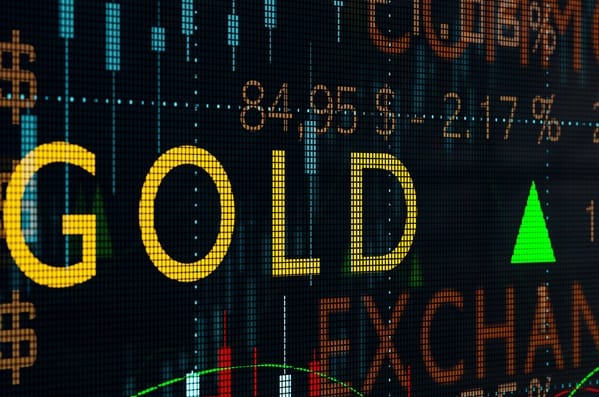Bussiness
Gold is between high real yield

Gold is heading for some gains today, approximately 0.25%, and is consolidating to the highest level of $2,310 per ounce at 7:30 a.m. GMT, after slight losses extending two days ago.
Gold’s movements come under the influence of a set of mixed factors, most notably optimism about the course of monetary policy this year, with the possibility of achieving two interest rate cuts this year.
On the other hand, bond yields are returning to rise, with fears resulting from the inability to achieve the Fed’s inflation targets with strong economic activity, in addition to the gradual decline of the increase in geopolitical tensions resulting from the war in the Middle East.
While the markets are optimistic about the possibility of achieving two rate cuts this year, which may not exceed 50 basis points, starting next September, during which the markets do not expect the possibility of keeping the current rates unchanged by more than 35%, according to the CME FedWatch Tool.
However, this optimism may remain fragile with accelerating economic activity, which may push inflation to a further unexpected acceleration, keeping it away from its targets, and this is what Fed officials are already warning about. This narrative pushed 10-year bond yields further above 4.5%.
Also, the real yield on these bonds is rising and today they have regained the level of 1%, which is not far from the highest levels for this year at near 1.25%. This in turn does not help gold maintain its gains while increasing the attractiveness of assets generating relatively high returns.
Indeed, this is what Wall Street sees and continues to get rid of gold, whose largest physical exchange-traded funds have witnessed net outflows of about $4 billion year-to-date, despite optimism about lowering rates, the acceleration of the pace of central banks’ purchases of bullion, and fears of aggravation of the regional conflict in the East. Middle.
The conflict in the Middle East was indeed one of the most important factors supporting the price of gold, which lifted it from levels of $1,800 per ounce in October of last year.
While I believe that the Middle East front may calm down in one way or another, and this may actually happen in the coming days, despite the recent rollercoaster of the scene. In any case, I believe that the possibility of being drawn into a wide regional war is no longer likely and that the conflict will not go beyond its current scope. This, in turn, may cause gold to lose one of its hey supporting factor as the markets gradually forget these fears.
Therefore, it needs more weak economic figures from the US in addition to the acceleration of central banks’ holdings of bullion.










